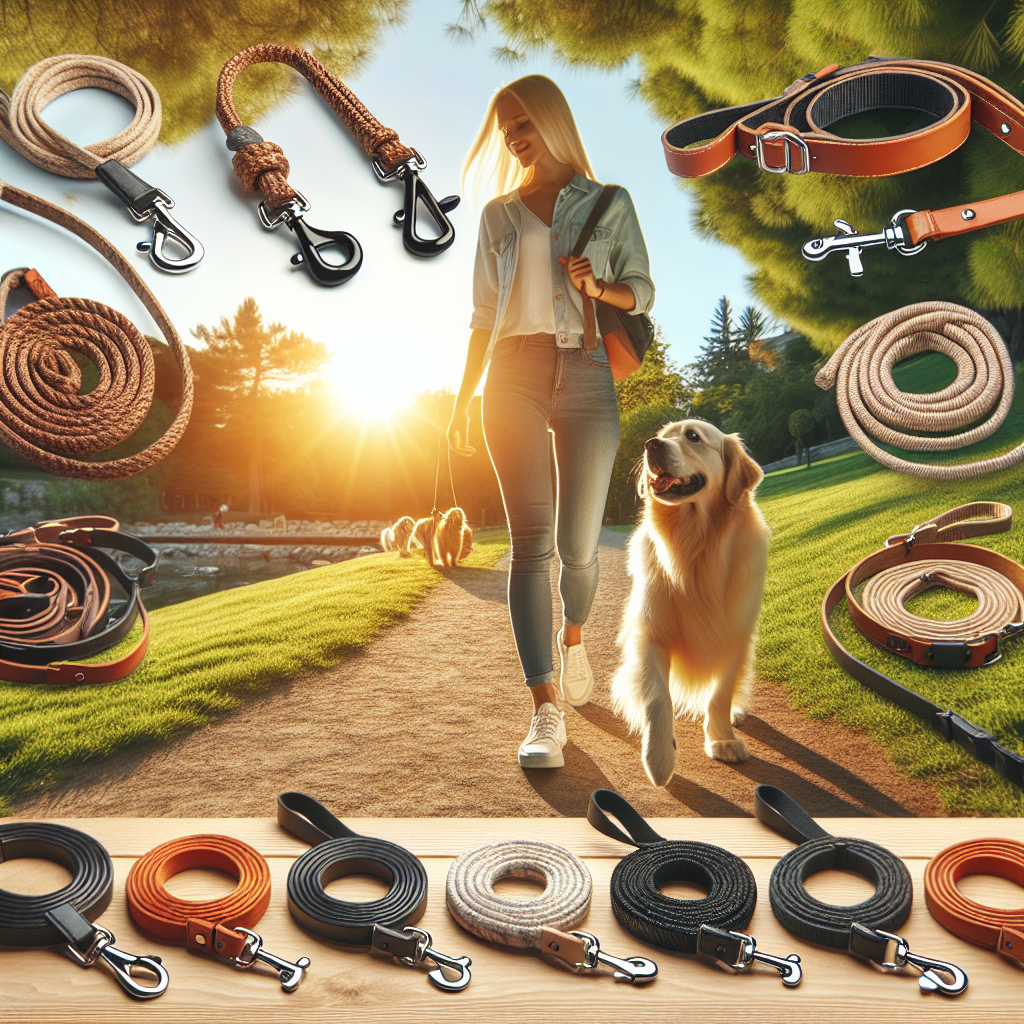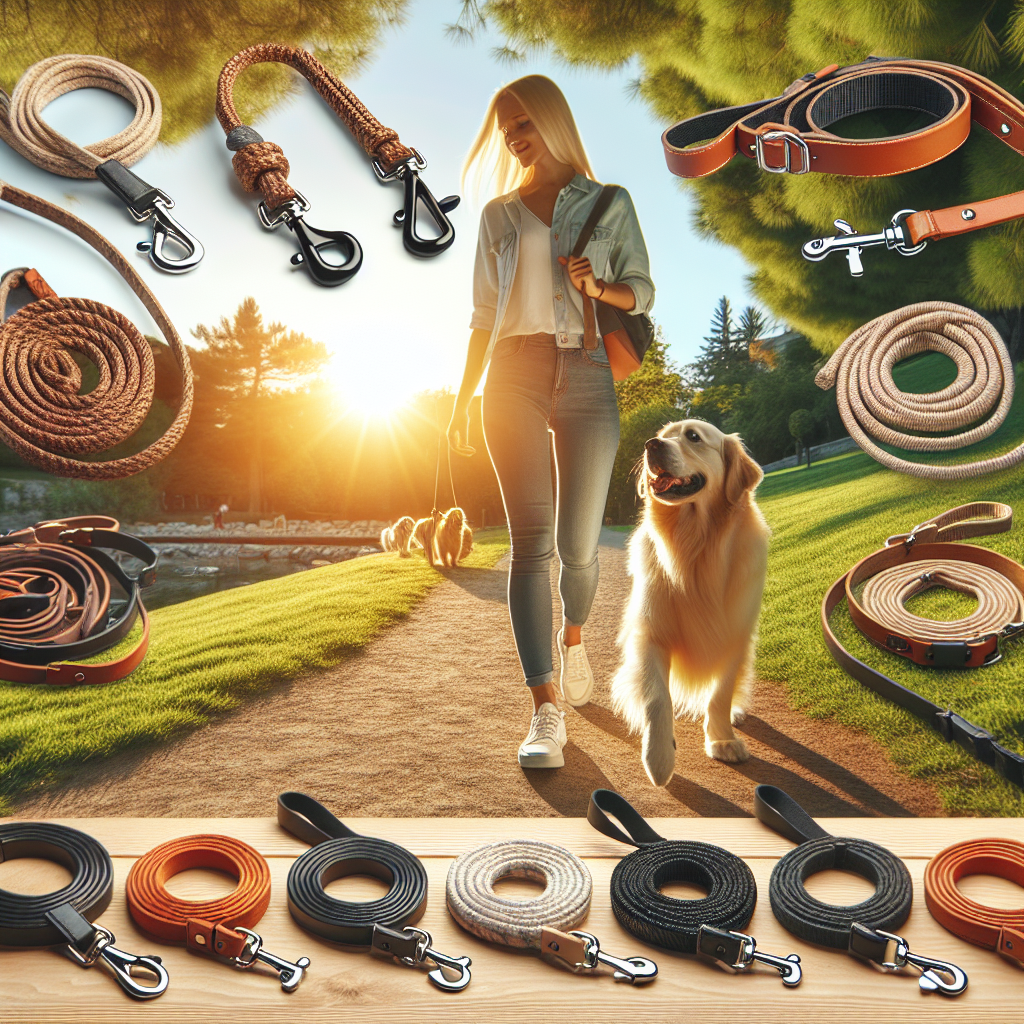Walking your dog is a joyful experience that not only strengthens your bond but also keeps your furry friend healthy and happy. However, with so many options available, choosing the right dog leash can be a daunting task. From retractable leashes to nylon ones, there are various factors to consider, such as size, strength, and comfort. Whether you have a small, medium, or large breed, finding the perfect leash is essential for a comfortable and safe walking experience. So, let’s embark on this adventure together and discover how to choose the right dog leash for your beloved companion.
Types of Dog Leashes
Standard Leash
The standard leash is the most common type of leash used for dogs. It is typically made of nylon or leather material and comes in a variety of lengths and widths. The standard leash has a simple design with a handle on one end and a clip or loop on the other end to attach to the dog’s collar or harness. This type of leash provides good control and is suitable for most dogs.
Retractable Leash
A retractable leash is designed with a mechanism that allows the leash to extend and retract as needed. It usually consists of a plastic handle with a button or lever to control the length of the leash. The main advantage of a retractable leash is that it gives your dog more freedom to explore while still maintaining some control. However, it is important to note that this type of leash requires responsible handling and may not be suitable for dogs that are prone to pulling or have limited recall.
Martingale Leash
A martingale leash is a combination of a collar and a leash. It has an adjustable loop that fits around the dog’s neck, providing gentle control and preventing the dog from slipping out of the leash. This type of leash is commonly used for dogs that have a tendency to back out of their collars or have neck or throat issues. The martingale leash is a good choice for dogs that need extra security during walks.
Hands-Free Leash
As the name suggests, a hands-free leash allows you to walk your dog without holding onto the leash with your hands. It typically consists of a waistband or belt that you wear around your waist and a leash that is attached to the belt. This type of leash is great for people who like to jog, hike, or have their hands free for other activities while walking their dogs. It provides a convenient and comfortable way to keep your dog by your side.
Chain Leash
A chain leash is made of metal links and is known for its strength and durability. It is commonly used for large and powerful breeds that require extra control. The chain leash has a sturdy construction and can withstand chewing and pulling. However, it is important to note that the metal links can be heavy and may not be suitable for smaller or more sensitive dogs.
Considerations for Choosing a Dog Leash
Dog’s Size and Strength
When choosing a dog leash, it is important to consider your dog’s size and strength. Smaller dogs may be more comfortable with a lighter and thinner leash, while larger dogs may require a sturdier leash to handle their strength. It is important to choose a leash that can safely control your dog without causing any discomfort or harm.
Walking Environment
The environment in which you will be walking your dog is another factor to consider when choosing a dog leash. If you live in a busy city with crowded streets, a shorter leash may be more suitable to keep your dog close by and prevent tangling. On the other hand, if you have access to open, wide spaces, a longer leash or a retractable leash may provide your dog with more freedom to explore.
Training Level
The training level of your dog is also an important consideration. If your dog is still in the process of being trained, a standard leash or a martingale leash can provide the necessary control and guidance. However, if your dog is well-trained and has good recall, a retractable leash or a hands-free leash may be more appropriate.
Comfort for Both Dog and Owner
Comfort is an important factor to consider for both you and your dog. Look for a leash with a comfortable handle that is easy to hold and grip. Consider the material of the leash and choose one that is soft and comfortable for your dog’s neck or body. Additionally, make sure the leash is the right length for your walking style and allows both you and your dog to move comfortably.
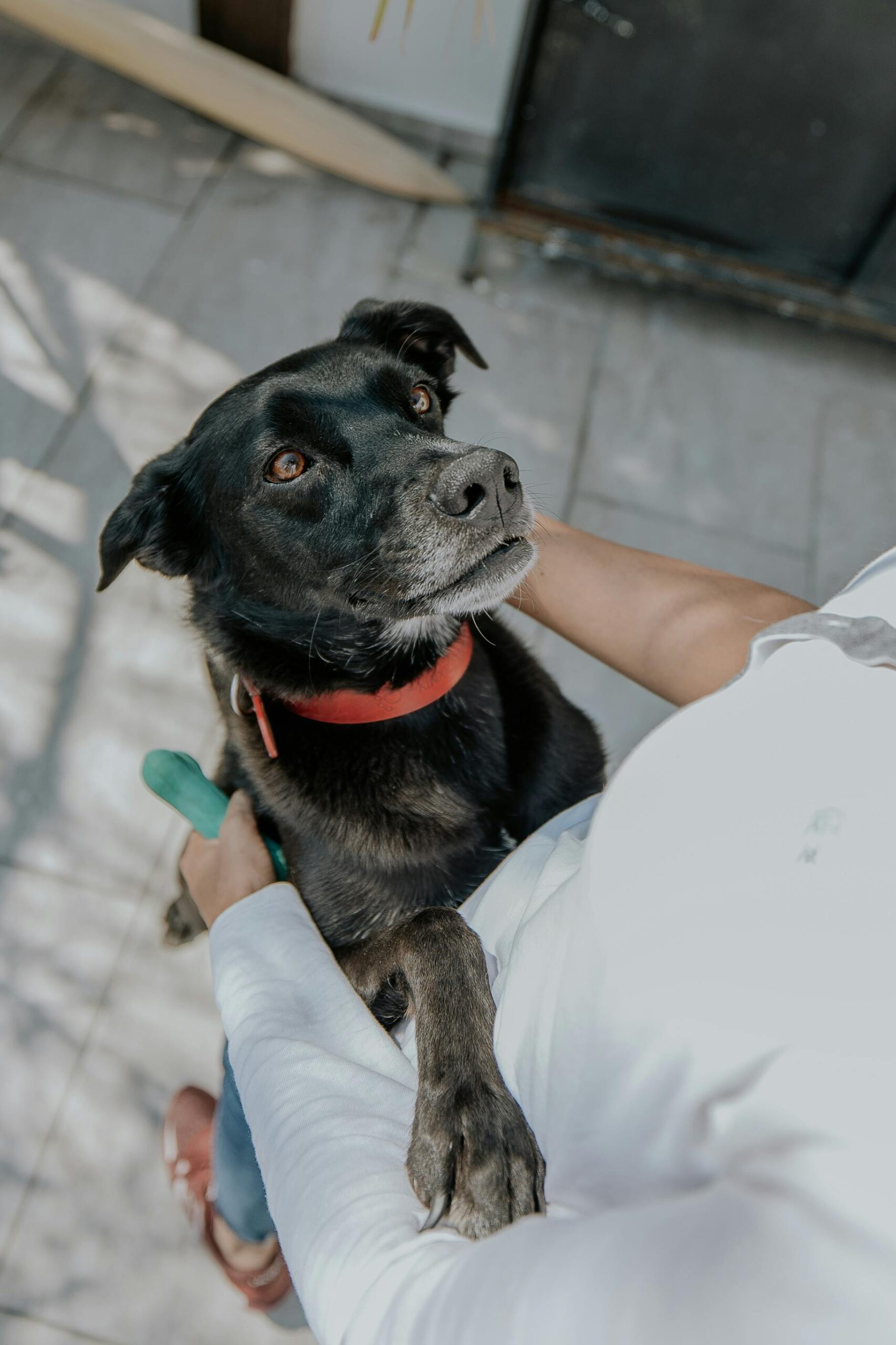
Features to Look for in a Dog Leash
Material
The material of the dog leash plays a crucial role in its durability and comfort. Nylon and leather are two common materials used for dog leashes. Nylon leashes are lightweight and come in various colors and patterns. They are also easy to clean and tend to dry quickly. Leather leashes, on the other hand, are more durable and often have a classic look. They may require more maintenance, such as conditioning, to keep them in good condition.
Length
The length of the leash depends on personal preference and walking style. For city walks or crowded areas, a shorter leash (around 4 to 6 feet) can provide more control and prevent tangling. If you have more open spaces or want to give your dog more freedom to explore, a longer leash (around 8 to 10 feet) or a retractable leash may be more suitable.
Width
The width of the leash should be appropriate for your dog’s size and strength. Smaller dogs may be more comfortable with a narrower leash, while larger dogs may require a wider leash for better control. It’s important to choose a leash that feels comfortable for both you and your dog and provides sufficient strength and durability.
Handle Type
The handle of the leash should be comfortable to hold and provide a secure grip. Look for a leash with a padded handle or a soft grip material to prevent discomfort or rubbing on your hands. Some leashes may also have additional features such as ergonomic designs or reflective strips for enhanced visibility during nighttime walks.
Attachment Type
The attachment type of the leash refers to how it attaches to your dog’s collar or harness. The most common attachment type is a metal clip or clasp that is easy to use and secure. Make sure the attachment is strong and reliable to prevent any accidental detachments. Some leashes may also have a swivel feature on the attachment to prevent tangling.
Pros and Cons of Different Dog Leashes
Standard Leash
- Pros: Provides good control, suitable for most dogs, comes in a variety of lengths and widths, affordable.
- Cons: Limited freedom of movement for the dog, may require more effort to hold and grip.
Retractable Leash
- Pros: Provides more freedom for dogs to explore, adjustable length, convenient for dog owners.
- Cons: Requires responsible handling, may not be suitable for dogs that pull or have limited recall, may tangle or break if not properly maintained.
Martingale Leash
- Pros: Provides gentle control, prevents dogs from slipping out of the leash, suitable for dogs with neck or throat issues.
- Cons: Not suitable for all dog breeds, may require adjustment for proper fitting.
Hands-Free Leash
- Pros: Allows for hands-free walking, convenient for activities such as jogging or hiking, provides a comfortable and secure fit.
- Cons: May not provide as much control as handheld leashes, may take time for both dog and owner to adjust.
Chain Leash
- Pros: Strong and durable, suitable for large and powerful breeds, resistant to chewing and pulling.
- Cons: Heavy and may not be suitable for smaller or more sensitive dogs, may require more maintenance to prevent rusting.
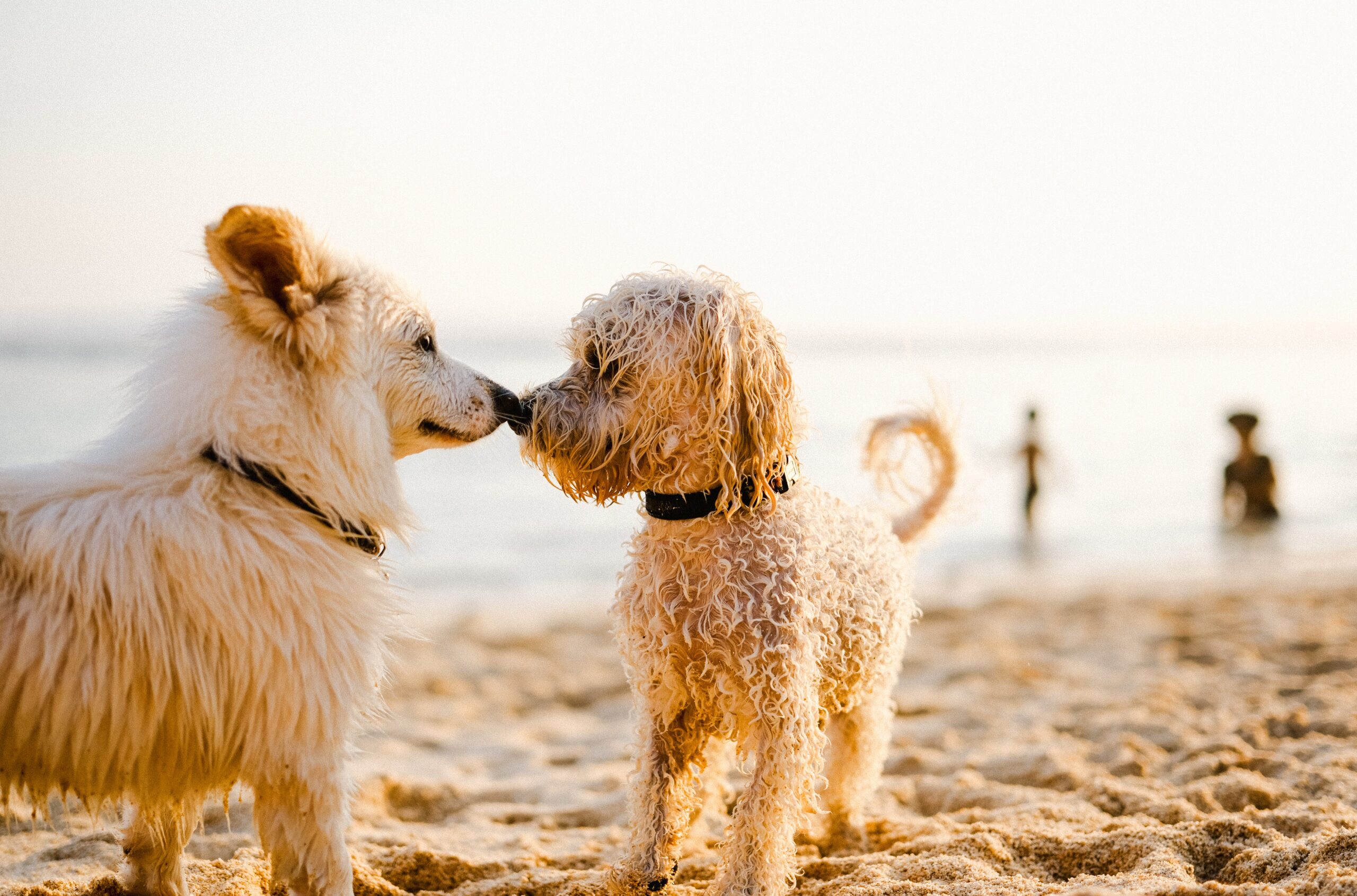
Choosing a Leash for Different Dog Breeds
Small Dogs
For small dogs, a lightweight and thin leash is generally more suitable. A standard leash made of nylon or a retractable leash that provides them with freedom to explore can be good options. It’s important to ensure the leash is not too heavy or thick for their size.
Medium-Sized Dogs
Medium-sized dogs can benefit from a standard leash or a retractable leash, depending on their training level and walking environment. Consider the width and length of the leash to ensure it is appropriate for their strength and size.
Large Dogs
Large dogs require a sturdy and reliable leash that can handle their strength. A standard leash made of durable materials such as nylon or leather is a good choice. Martingale leashes can also provide extra security for large dogs.
Giant Breeds
Giant breeds need a leash that is strong and durable enough to handle their size and strength. A chain leash or a heavy-duty nylon leash can provide the necessary control and durability for these breeds.
Active Breeds
Active breeds may benefit from a hands-free leash that allows them and their owners to engage in physical activities such as jogging or hiking. A leash with reflective strips can also enhance visibility during outdoor adventures.
Where to Buy Dog Leashes
Local Pet Stores
Local pet stores often have a wide variety of dog leashes to choose from. They offer the advantage of being able to see and feel the leashes before purchasing. Pet store staff can also provide advice and recommendations based on your dog’s specific needs.
Online Retailers
Online retailers offer a convenient way to browse and purchase dog leashes from the comfort of your own home. They often have a larger selection of leashes compared to physical stores and may offer competitive prices. Read customer reviews and check the return policy before making a purchase.
Specialty Pet Stores
Specialty pet stores may carry unique or specialized dog leashes that are not readily available in other stores. These stores often focus on providing a wide array of high-quality pet products and may have knowledgeable staff to assist you in finding the right leash for your dog.
Veterinarian Offices
Some veterinarian offices may sell dog leashes as part of their pet supply offerings. This can be a convenient option if you are already visiting the vet for a check-up or appointment. The advantage of buying a leash from a veterinarian office is that the staff can provide recommendations based on your dog’s specific needs and health.

Factors Affecting the Price of a Dog Leash
Brand
The brand of the dog leash can have a significant impact on its price. Well-known and reputable brands often charge a premium for their products, as they have established a reputation for quality and durability. However, it is also possible to find affordable options from lesser-known brands that still offer good quality.
Material Quality
The quality of the material used in the dog leash can also affect its price. High-quality materials such as genuine leather or heavy-duty nylon are generally more expensive than lower-quality materials. It’s important to strike a balance between budget and durability when considering material quality.
Additional Features
Dog leashes with additional features such as reflective strips, ergonomic handles, or waterproof materials may have a higher price tag. These additional features can provide added convenience, safety, and comfort, but they may come at a higher cost.
Size and Length
The size and length of the dog leash can affect its price. Longer leashes or leashes designed for larger breeds may be priced higher due to the additional materials and construction required to ensure strength and durability. Consider your dog’s needs and your walking style when choosing the appropriate size and length.
Durability
The durability of the dog leash is an important factor to consider when assessing its price. A leash made of high-quality materials and constructed with strong stitching or hardware is likely to be more expensive than a leash of lower quality. Investing in a durable leash can save money in the long run by avoiding frequent replacements.
How to Properly Use and Maintain a Dog Leash
Proper Fitting
Ensure that the dog leash is properly fitted to your dog’s collar or harness. It should be snug enough to prevent slipping off, but not too tight to cause discomfort or restrict movement. Regularly check the fit and make adjustments as needed, especially if your dog is still growing.
Holding and Grip Techniques
Hold the leash with a grip that feels comfortable and secure for you. Avoid wrapping the leash around your hand or fingers, as this can result in injuries if your dog suddenly pulls or lunges. Use a relaxed grip and keep the leash at a length that allows both you and your dog to move comfortably.
Regular Cleaning
Clean the leash regularly to maintain its condition and prevent the buildup of dirt or odor. Refer to the manufacturer’s instructions for cleaning recommendations. For fabric leashes, handwashing with mild soap and warm water is often sufficient. Leather leashes may require specific leather cleaning products or conditioning.
Inspecting for Damage
Regularly inspect the leash for any signs of wear, tear, or damage. Check the stitching, clasp, and handle for any loose threads, fraying, or rust. Pay attention to any signs of weakness or distress, as a damaged leash can compromise the safety of both you and your dog. Replace a damaged leash as soon as possible.
Storage
When not in use, store the leash in a clean and dry place. Avoid exposing it to extreme temperatures or direct sunlight, as this can weaken the materials and shorten its lifespan. Hang the leash or keep it rolled up to prevent tangling or knotting.
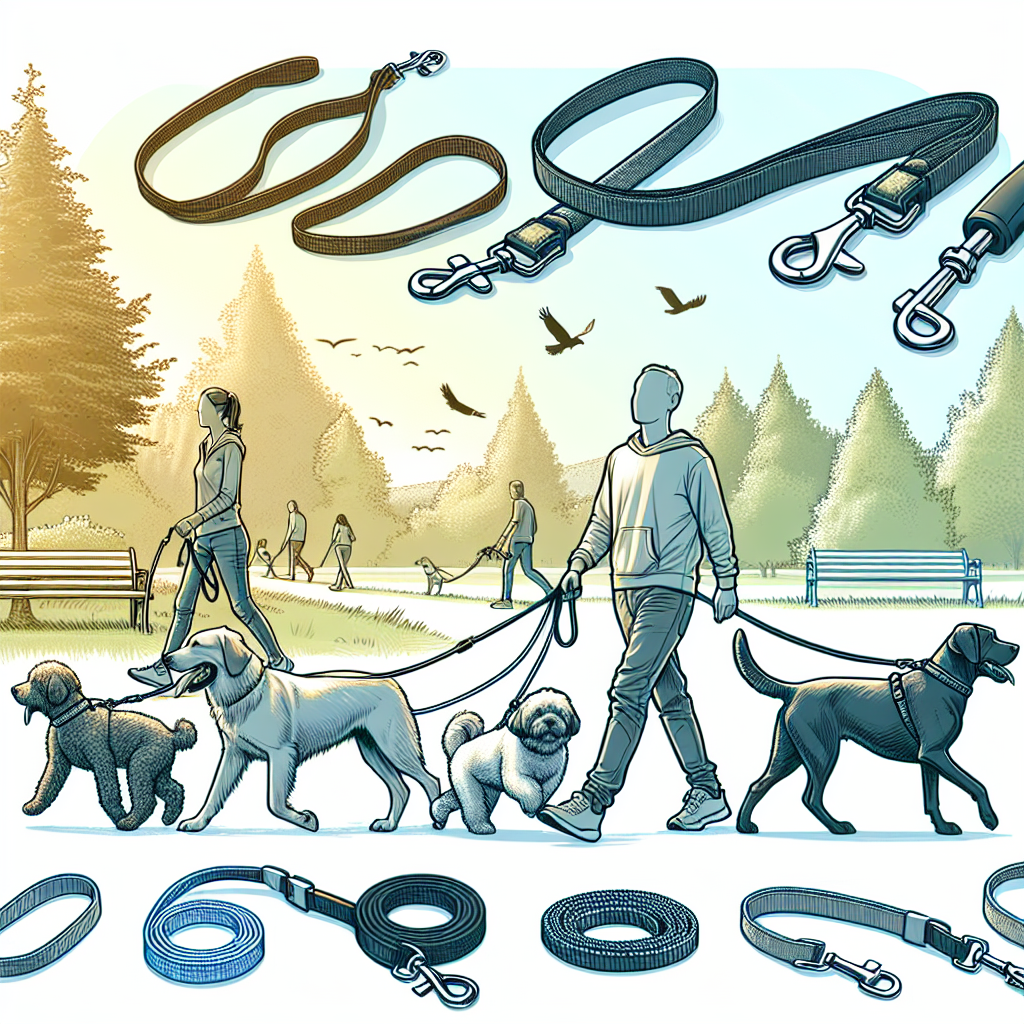
Common Mistakes to Avoid When Choosing a Dog Leash
Choosing the Wrong Length
Choosing a leash that is too long or too short can affect your control and the comfort of both you and your dog. Consider the walking environment and your dog’s size and strength when selecting the appropriate length. A leash that is too long may result in tangling or difficulty in controlling your dog, while a leash that is too short may limit their movement.
Opting for a Cheap Quality Leash
While it can be tempting to choose a cheaper leash to save money, it may not be the most cost-effective option in the long run. Cheap quality leashes are more prone to fraying, breaking, or malfunctioning, which can compromise your dog’s safety. Invest in a durable and reliable leash that can withstand regular use and provide peace of mind.
Ignoring the Dog’s Behavior on Leash
It is important to consider your dog’s behavior and habits when choosing a leash. If your dog tends to pull or lunge, a retractable leash may not be suitable as it can result in injuries or loss of control. Take into account your dog’s training level and any specific behavioral issues to ensure you choose a leash that provides appropriate control and safety.
Conclusion
Choosing the right dog leash is an important decision to ensure the safety, comfort, and control of both you and your furry friend during walks. Consider your dog’s size and strength, the walking environment, training level, and comfort when selecting a leash. Look for features such as material, length, width, handle type, and attachment type that best suit your needs. Understand the pros and cons of different leash types and choose accordingly. Take into account your dog’s breed to find the most suitable leash. Consider purchasing from local pet stores, online retailers, specialty pet stores, or veterinarian offices. Factors affecting the price of a leash include brand, material quality, additional features, size and length, and durability. Learn how to properly use and maintain a leash to ensure its longevity and safety. Avoid common mistakes such as choosing the wrong length, opting for a cheap quality leash, and ignoring the dog’s behavior on leash. By taking these considerations into account, you can find the perfect leash to make your walks enjoyable and safe for both you and your beloved canine companion.
